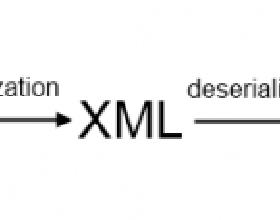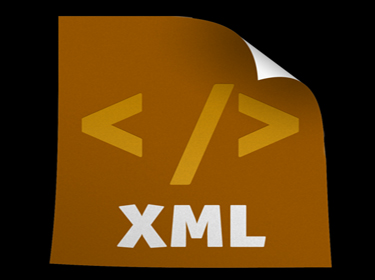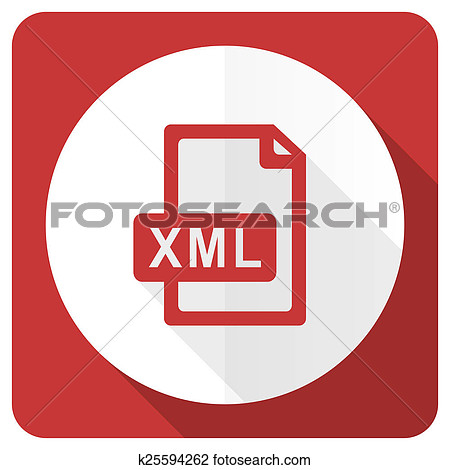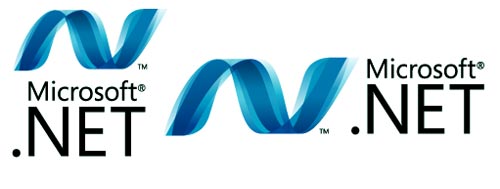8 recommended articles about XMLSerializer
XML serialization is the process of converting the public properties and fields of an object into XML format for storage or transmission. Deserialization recreates the original state of the object from the XML output. The most important class in XML serialization is the XmlSerializer class. Its most important methods are the Serialize and Deserialize methods, which are located in the System.Xml.Serialization namespace. 1. Basic points of XML serialization Before starting this section, let’s first look at the simplest example: namespace learning test { Class Program { static void Main(string[] args) &
1. 10 recommended courses on Xml serialization

##Introduction: XML serialization is the process of converting the public properties and fields of an object into XML format for storage or transmission. Deserialization recreates the original state of the object from the XML output. The most important class in XML serialization is the XmlSerializer class. Its most important methods are the Serialize and Deserialize methods, which are located in the System.Xml.Serialization namespace. 1. Basic points of XML serialization Before starting this section, let’s first look at the simplest example: n...
2. Recommended articles about Xml.Serialization 6 articles

Introduction: XML serialization is to convert the public properties and fields of an object into XML The process of formatting for storage or transmission. Deserialization recreates the original state of the object from the XML output. The most important class in XML serialization is the XmlSerializer class. Its most important methods are the Serialize and Deserialize methods, which are located in the System.Xml.Serialization namespace. 1. Basic points of XML serialization Before starting this section, let’s first look at the simplest example: n...
3. Xml serialization graphic code Detailed explanation

Introduction: XML serialization is to convert the public properties and fields of the object into XML format so that The process of storage or transmission. Deserialization recreates the original state of the object from the XML output. The most important class in XML serialization is the XmlSerializer class. Its most important methods are the Serialize and Deserialize methods, which are located in the System.Xml.Serialization namespace.
4. C# Source code sharing for exporting List data to xml file

Introduction: C# exports List data to xml files. The main ones used here are: XmlSerializer class (System.Xml.Serialization) to serialize objects into XML documents and deserialize objects from XML documents. . XmlSerializer gives you control over how objects are encoded into XML. Entity class code: /// /// User entity class /// /// Note: The access modifier of the class must be: public, otherwise
5. c# Inaccessible due to its protection level and can only handle detailed code for public types

Introduction: In When implementing C# to export List data to an xml file [source code attached], an error was encountered: it is inaccessible due to its protection level. Can only handle public types. The line of code that generated the error:
#6.XmlSerializer object Xml serialization and deserialization sample code analysis
Introduction: The .Net namespace corresponding to this essay is System.Xml.Serialization; the sample code in the article needs to reference this namespace. 7. Use XMLSerializer to serialize objects to XML Introduction: Microsoft has realized the importance of serialized data, so the namespaces System.Runtime.Serialization and System.xml.Serialization are included in the .NET framework to provide serialization functions for users Provides a framework for writing your own serialization methods. The System.Xml.Serialization namespace provides basic methods for serializing an object into XML format. Let's take a look at how to use this method. 8. C# Entity class serialization and deserialization (XmlSerializer) Introduction: demo download link: http://download.csdn.net/detail/cometwo/9376336mobiscroll extension: http://download.csdn.net/detail/cometwo/9376397 Previous Lightweight: 


The above is the detailed content of 8 recommended articles about XMLSerializer. For more information, please follow other related articles on the PHP Chinese website!

Hot AI Tools

Undresser.AI Undress
AI-powered app for creating realistic nude photos

AI Clothes Remover
Online AI tool for removing clothes from photos.

Undress AI Tool
Undress images for free

Clothoff.io
AI clothes remover

Video Face Swap
Swap faces in any video effortlessly with our completely free AI face swap tool!

Hot Article

Hot Tools

Notepad++7.3.1
Easy-to-use and free code editor

SublimeText3 Chinese version
Chinese version, very easy to use

Zend Studio 13.0.1
Powerful PHP integrated development environment

Dreamweaver CS6
Visual web development tools

SublimeText3 Mac version
God-level code editing software (SublimeText3)

Hot Topics
 1386
1386
 52
52
 Is the conversion speed fast when converting XML to PDF on mobile phone?
Apr 02, 2025 pm 10:09 PM
Is the conversion speed fast when converting XML to PDF on mobile phone?
Apr 02, 2025 pm 10:09 PM
The speed of mobile XML to PDF depends on the following factors: the complexity of XML structure. Mobile hardware configuration conversion method (library, algorithm) code quality optimization methods (select efficient libraries, optimize algorithms, cache data, and utilize multi-threading). Overall, there is no absolute answer and it needs to be optimized according to the specific situation.
 How to convert XML files to PDF on your phone?
Apr 02, 2025 pm 10:12 PM
How to convert XML files to PDF on your phone?
Apr 02, 2025 pm 10:12 PM
It is impossible to complete XML to PDF conversion directly on your phone with a single application. It is necessary to use cloud services, which can be achieved through two steps: 1. Convert XML to PDF in the cloud, 2. Access or download the converted PDF file on the mobile phone.
 How to convert XML to PDF on your phone?
Apr 02, 2025 pm 10:18 PM
How to convert XML to PDF on your phone?
Apr 02, 2025 pm 10:18 PM
It is not easy to convert XML to PDF directly on your phone, but it can be achieved with the help of cloud services. It is recommended to use a lightweight mobile app to upload XML files and receive generated PDFs, and convert them with cloud APIs. Cloud APIs use serverless computing services, and choosing the right platform is crucial. Complexity, error handling, security, and optimization strategies need to be considered when handling XML parsing and PDF generation. The entire process requires the front-end app and the back-end API to work together, and it requires some understanding of a variety of technologies.
 Is there any mobile app that can convert XML into PDF?
Apr 02, 2025 pm 08:54 PM
Is there any mobile app that can convert XML into PDF?
Apr 02, 2025 pm 08:54 PM
An application that converts XML directly to PDF cannot be found because they are two fundamentally different formats. XML is used to store data, while PDF is used to display documents. To complete the transformation, you can use programming languages and libraries such as Python and ReportLab to parse XML data and generate PDF documents.
 How to open web.xml
Apr 03, 2025 am 06:51 AM
How to open web.xml
Apr 03, 2025 am 06:51 AM
To open a web.xml file, you can use the following methods: Use a text editor (such as Notepad or TextEdit) to edit commands using an integrated development environment (such as Eclipse or NetBeans) (Windows: notepad web.xml; Mac/Linux: open -a TextEdit web.xml)
 Recommended XML formatting tool
Apr 02, 2025 pm 09:03 PM
Recommended XML formatting tool
Apr 02, 2025 pm 09:03 PM
XML formatting tools can type code according to rules to improve readability and understanding. When selecting a tool, pay attention to customization capabilities, handling of special circumstances, performance and ease of use. Commonly used tool types include online tools, IDE plug-ins, and command-line tools.
 How to open xml format
Apr 02, 2025 pm 09:00 PM
How to open xml format
Apr 02, 2025 pm 09:00 PM
Use most text editors to open XML files; if you need a more intuitive tree display, you can use an XML editor, such as Oxygen XML Editor or XMLSpy; if you process XML data in a program, you need to use a programming language (such as Python) and XML libraries (such as xml.etree.ElementTree) to parse.
 How to export pdf with xml
Apr 03, 2025 am 06:45 AM
How to export pdf with xml
Apr 03, 2025 am 06:45 AM
There are two ways to export XML to PDF: using XSLT and using XML data binding libraries. XSLT: Create an XSLT stylesheet, specify the PDF format to convert XML data using the XSLT processor. XML Data binding library: Import XML Data binding library Create PDF Document object loading XML data export PDF files. Which method is better for PDF files depends on the requirements. XSLT provides flexibility, while the data binding library is simple to implement; for simple conversions, the data binding library is better, and for complex conversions, XSLT is more suitable.




